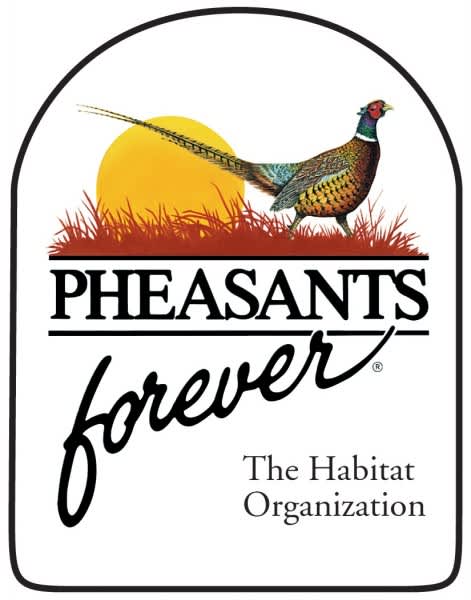Pheasants Forever Utilizes Legacy Funding to Permanently Protect 1,820 Minnesota Acres of Wildlife Habitat
Pheasants Forever 06.13.12

Pheasants Forever announces the completion of 12 land purchase projects in eight Minnesota counties with the help of grants recommended by the Lessard-Sams Outdoor Heritage Council. The properties, totaling 1,820 acres, are now permanently protected for wildlife, and will be turned over to the Minnesota Department of Natural Resources or U.S. Fish and Wildlife Service, and opened to public hunting and outdoor recreation as either state Wildlife Management Areas (WMA) or federal Waterfowl Production Areas (WPA).
The 12 acquisitions include seven WMA projects and five WPA projects. “It’s a great day for Minnesota conservation,” says Joe Pavelko, Pheasants Forever’s Minnesota Director of Conservation, “These projects span different regions of the state, but all share the common theme of conserving wildlife habitat forever. And all these outstanding projects were made possible with funding from the Outdoor Heritage Fund, which was created by Minnesota’s Clean Water, Land and Legacy Amendment.”
Pavelko also notes, “In addition to recognizing the benefits of these 12 acquisitions for Minnesota wildlife, it is just as important to recognize the benefits for every Minnesotan who appreciates the outdoors. These lands are now indefinitely protected, open for a variety of outdoor recreational activities and are available for the public to enjoy.”
Clay County, New 295-Acre WPA. This new Waterfowl Production Area will provide significant grassland and wetland protection. It also builds on existing investments, as it is very close in proximity to Pheasants Forever’s first WPA acquisition project from Legacy funding and is near other public and private grassland areas.
Jackson County, 145-Acre Addition, Christiania WPA. This purchase adds 145 acres to the existing 160-acre Christiania WPA, creating a 305-acre area that provides high quality wetland and upland habitats.
Lac qui Parle County, 54-Acre Addition, Wild Wings WMA. The upland acres will be extremely valuable habitat to this wildlife area, as the current area has a low percentage of nesting cover for pheasants. Boundary management will also improve the area for outdoor recreational users as the area increases to 167 acres. This project was completed with the help of a $75,000 North American Wetlands Conservation Act (NAWCA) grant.
Lac qui Parle County, New 109-Acre Corners WMA. This parcel contains a 24-acre wetland, with the balance enrolled in the Conservation Reserve Program. This piece of land lies within a major deer wintering area, and pheasants, ducks and geese are common. This project was completed with the help of a $75,000 NAWCA grant.
Lac qui Parle County, New 64-Acre Striker WMA. This property, which contains a natural wetland, is already bordered by wildlife areas on three sides, and will now expand grassland/wetland protection and recreational opportunities. This project was completed with the help of a $75,000 NAWCA grant.
Morrison County, 202-Acre Addition, Ereaux WMA. This large acquisition adds much-needed upland nesting cover acreage to the existing WMA, increasing its overall size to more than 700 acres. The Morrison County Pheasants Forever chapter contributed $5,000 to this project, and the Mille Lacs/Benton County Pheasants Forever chapter contributed $10,000 to its completion.
Otter Tail County, 32-Acre Addition, Putnam WPA. A pair of tracts deemed high-priority areas for wildlife habitat protection are now permanently conserved as part of the Putnam WPA. The area consists of wetlands, has upland habitat restoration potential and buffers against encroaching development.
Otter Tail County, 66-Acre Addition, Mondt WPA. This purchase conserves upland nesting cover vital to both upland birds and waterfowl, including sandhill cranes.
Otter Tail County, 80-Acre Addition, Grefsrud WPA. This acquisition provides high quality wildlife habitat and improves the wildlife management ability of the overall unit. The Pelican River Pheasants Forever chapter also contributed $1,000 to this project.
Pope County, 74-Acre Addition, Little Joe WMA. This purchase protects a unique landscape featuring oak savanna and remnant native prairie, home to white-tailed deer and wild turkey. The area also provides winter cover for pheasants. The purchase increases the size of the WMA to more than 300 acres.
Redwood County, New 640-Acre Voosen WMA. This project, Pheasants Forever’s largest single acquisition in southwest Minnesota, will add to an existing habitat complex that totals more than 1,200 acres. The project will permanently convert approximately 400 acres of bare farmland back to native upland prairie. The Redwood County Pheasants Forever chapter contributed $15,000 to this project.
Wright County, 59-Acre Addition, Pelican Lake WMA. Pelican Lake has been identified as a high priority area for restoration and lakeshore acquisition by the Minnesota DNR and the USFWS. This parcel, which adds to the existing 500-acre Pelican Lake WMA, will help facilitate lake water management on Pelican Lake. The Wright County Pheasants Forever chapter also contributed $10,000 to this project.

